OnePlus retrospective: Looking back at all OnePlus phones over the last six years

OnePlus burst onto the scene back in April 2014. Its first phone was released in partnership with Cyanogen, and from the very beginning, OnePlus set itself apart by focusing on its user community. Whereas other manufacturers flooded the market with phones, OnePlus released just two flagships a year, with the brand laser-focused on the value category.
Six years and 18 phones later, OnePlus is a dominant player in the smartphone industry. OnePlus defined the value segment for several years, and its penchant for delivering the best possible performance has led to some of the fastest phones money can buy. OnePlus also managed to turn its OxygenOS user interface into one of the best skins on Android.
With the OnePlus 8 set to be unveiled on April 14, I thought it would be interesting to see how OnePlus phones have evolved over the years. While OnePlus has switched to more exotic materials in recent years, it's easy to see that the core tenets for the brand — delivering value and top-notch performance — haven't changed too much over the years. OnePlus adapted its designs with the times as phones got taller and narrower, but you can see a clear evolution in the design aesthetic.
So, with the brand about to introduce new phones soon, let's take a look back at all the devices that it launched over the last six years and the indelible impact they've had on the smartphone industry.
OnePlus One: The one that started it all

The OnePlus One launched back in April 2014, with OnePlus teaming up with Cyanogen to deliver a clean and uncluttered software with a powerful set of customization options. The phone's retail price of $299 immediately struck a chord with the community.
The Sandstone finish on the OnePlus One feels great after all these years.
One of the things that made the OnePlus One stand out was the hardware. The phone featured a 5.5-inch 16:9 1080p display, 2.5GHz Snapdragon 801 chipset, 3GB of RAM, 16/64GB of internal storage, 13MP camera at the back, 5MP front shooter, 3.5mm jack, Micro-USB charging port, and a 3100mAh battery. These specs hold up just fine in 2020, so you can only imagine the sort of response OnePlus got for the device back in 2014.
It's a strange feeling to go back to the OnePlus One after all this time. I bought a unit as soon as OnePlus kicked off sales, I got my hands on an invite code (remember those?), and used it for nearly a year. That Sandstone finish still feels great to hold and use, particularly given that most phones these days are glass slabs.
Get the latest news from Android Central, your trusted companion in the world of Android






There are a few design features that evoke nostalgia: the 16:9 screen with large bezels, hardware navigation keys on the bottom bezel, and a single camera module at the back. The OnePlus One was designed to excel at the basics, and it did that very well. Because OnePlus was on a budget, it left out features like fingerprint authentication, but the broad design aesthetic — with chamfered edges and subtle curves where the back meets the mid-frame — continued with later generations of OnePlus devices.
On the software front, the OnePlus One launched with Android 4.4.2 KitKat, and got the update to Cyanogen OS 13 based on Android 6.0.1 Marshmallow. The software obviously doesn't hold up in 2020, but the phone still feels responsive.
Interested in reliving the nostalgia? Go through our OnePlus One review:
OnePlus 2: Say hello to the Alert Slider

The OnePlus One was a tough act to follow, but OnePlus introduced a laundry list of improvements to the OnePlus 2. It launched in July 2015 for $329, and had unique customization options in the form of StyleSwap back covers that let users switch out the back cover to a material of their liking. OnePlus debuted five back covers with the device: Bamboo, Black Apricot, Kevlar, Rosewood, and Sandstone Black.
The OnePlus 2 introduced USB-C charging, the Alert Slider, and much better build quality.
The phone featured a metal mid-frame and had noticeably better build quality, and it came with a fingerprint sensor on the bottom bezel. The OnePlus 2 was also the first OnePlus phone to feature a USB-C charging port, and that was a big deal at the time. Remember, Samsung's flagship at the time — the Galaxy S6 series — had a Micro-USB charging port. While the OnePlus 2 may not have been the first phone in the world with USB-C charging (that honor goes to the LeTV Le 1), but it was the first to make the standard available to a mainstream audience.
The OnePlus 2 also introduced the Alert Slider, a dedicated hardware key that lets you quickly switch between various notification profiles. The feature was an instant hit, and has been a mainstay on all OnePlus phones that followed.


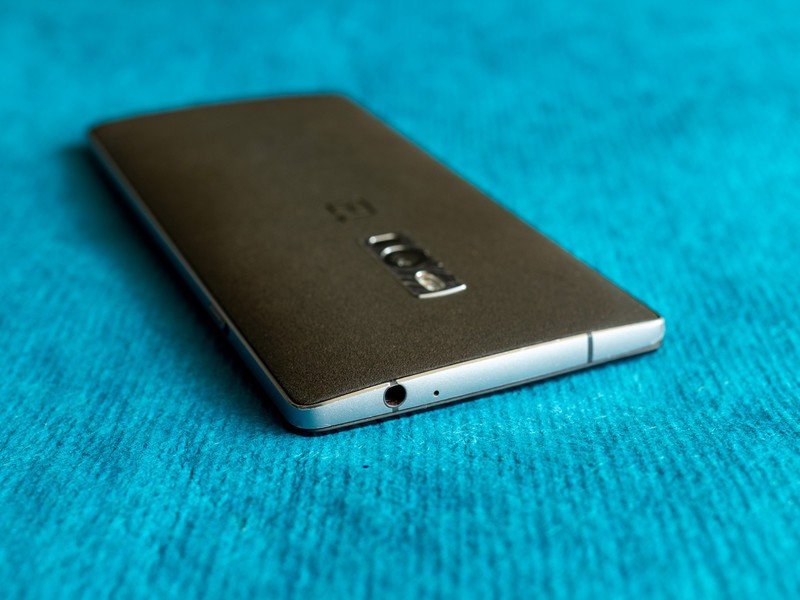



On the hardware side of things, the OnePlus 2 came with a 5.5-inch 1080p IPS LCD display, Snapdragon 810 chipset (version 2.1 because that was a thing), 3GB/16GB and 4GB/64GB configuration options, 13MP camera at the back, 5MP front shooter, and 3300mAh battery. Notably, the phone did not have NFC.
Switching to the OnePlus 2 after the OnePlus One, it's easy to make out the differences in build quality. For all that the OnePlus One offered on the hardware side of things, it was lacking in the overall fit and finish, and the OnePlus 2 fixed those issues.
OnePlus 2 review
OnePlus X: Ahead of its time

The OnePlus X was an ambitious bet for the Chinese manufacturer as it set its sights on the mainstream market. Debuting in October 2015 for just $249, it continues to be the most affordable phone launched by the company.
The OnePlus X was the perfect compact phone, and we're long overdue a sequel.
There were obviously a lot of compromises to get to that low retail figure: the phone lacked a fingerprint sensor, offered just 16GB of storage, there was no NFC, it was powered by an older Snapdragon 801 chipset, and had a Micro-USB port. While the phone wasn't a huge success, it attracted a sizable following for its form factor. Its diminutive size made it perfect for one-handed use, and to this day, the OnePlus X has a lot of fans. Because of the limited storage, the OnePlus X was the only phone from the manufacturer to offer an SD card slot.
The glass back and compact form factor made the OnePlus X immediately stand out from other devices. Phones back in 2015 weren't massive by today's standards, but the large screen trend firmly took root and devices were becoming increasingly unwieldy. The OnePlus X, meanwhile, offered flagship-tier performance in a compact chassis.


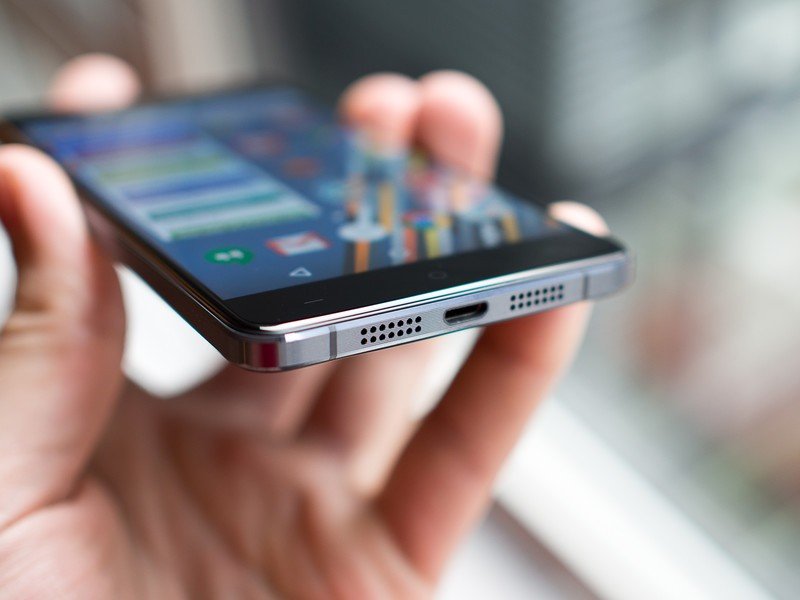

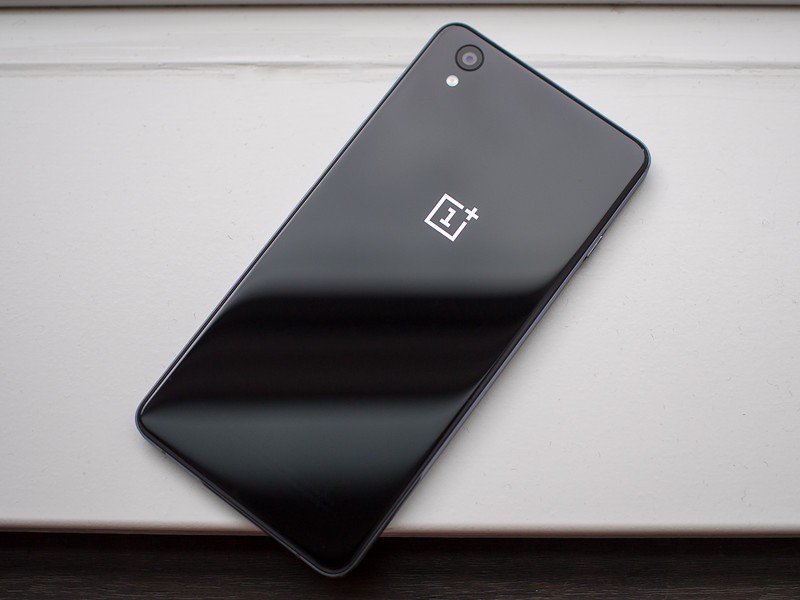

To put things into context, the Galaxy S10e is 2.2mm taller and 1mm thicker than the OnePlus X. It's easy to see why the OnePlus X has achieved cult status with the Android community — the form factor is fantastic, and it's a shame we didn't get a sequel with beefier hardware. The OnePlus X launched at a time where OnePlus was still in its infancy, but in 2020 there is definitely a place for a compact phone with flagship-tier specs.
OnePlus X review
OnePlus 3: The dawn of a new era

The OnePlus 2 and X weren't exactly bestsellers, so OnePlus had to reinvent itself in 2016 to stand out in an increasingly crowded field. The result was the OnePlus 3, which introduced a bold new design aesthetic, upgraded internals, Dash Charge, and much better cameras. Best of all, it was sold without an invite — you could buy the device straight from OnePlus by paying $389. OnePlus was finally ready to play with the big boys.
OnePlus went back to the basics with the OnePlus 3, and it paid off handsomely for the company.
The OnePlus 3 showed that OnePlus could measure up to the best that the likes of Samsung, LG, and HTC have to offer. OnePlus switched to an all-aluminum chassis, but it retained the chamfered edges and subtle curves at the back, and there were zero issues with build quality. Sure, the aesthetic may not have been the most original as most phones at the time had similar metal designs, but OnePlus nailed the execution.
The hardware also saw a decent upgrade: OnePlus switched to an AMOLED panel for the first time, and the 5.5-inch Full HD display was one of the best in its category. The 14nm Snapdragon 820 also turned out to be a fantastic chipset, delivering significantly improved performance while maximizing efficiency. The OnePlus 3 was available in a single variant with 6GB of RAM and 64GB of storage, a 16MP camera with OIS, 8MP front shooter, and 3000mAh battery with 20W Dash Charge tech.
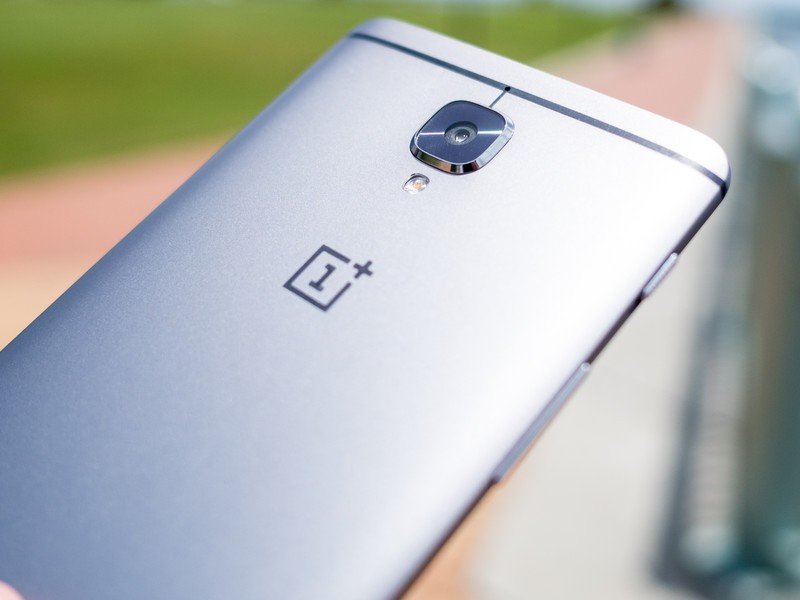


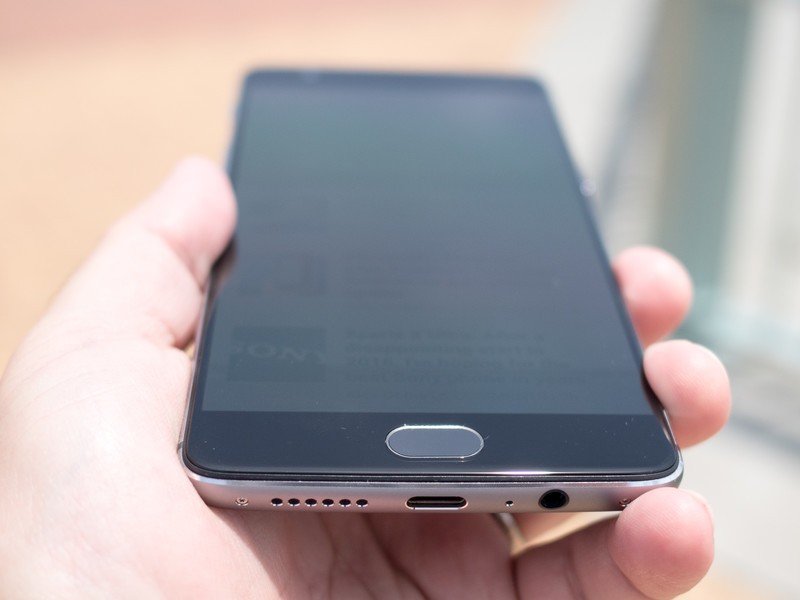

It was also with the OnePlus 3 that OxygenOS came into its own. OnePlus finally fixed all the issues that plagued the UI in earlier versions, and it delivered a clean interface with a host of exciting customization options. The phone picked up three platform updates, launching with Android 6.0.1 Marshmallow and getting the Android 9.0 Pie update in 2019.
What's astonishing about the OnePlus 3 is how well it has held up. I booted up my unit earlier this year, and I used it for a few hours (after all the updates were installed) just to get a feel for the hardware. And you know what? The phone feels just fine to use in 2020. The bezels feel huge and it takes a while to get acclimated to using a 16:9 screen, but the UI is still lag-free and fluid. Not bad at all for a four-year-old phone.
OnePlus 3 review: Finally all grown up
OnePlus 3T: Iteration, iteration, iteration

OnePlus introduced its two-flagship release cadence with the OnePlus 3T. The phone debuted just six months after the launch of the OnePlus 3, and offered a slightly faster chipset, larger battery, and a higher-res front camera for $429 — $40 more than the cost of the OnePlus 3.
OnePlus has mastered the mid-cycle refresh, and it all started with the OnePlus 3T.
The OnePlus 3T was powered by the Snapdragon 821 chipset, came with a 16MP front camera, and offered a larger 3400mAh battery with the same 20W Dash Charge fast charging tech as its predecessor. It was also sold in a darker Gunmetal color option, mostly as a way to differentiate it from its predecessor. The 3T was also the first phone from the manufacturer to be offered in a 128GB storage option, which retailed at $479.
Although the 3T had a marginally faster chipset, there wasn't any difference from the regular OnePlus 3 in day-to-day use. Both phones were on the same software branch, and the 3T also received the update to Android 9.0 Pie last year.



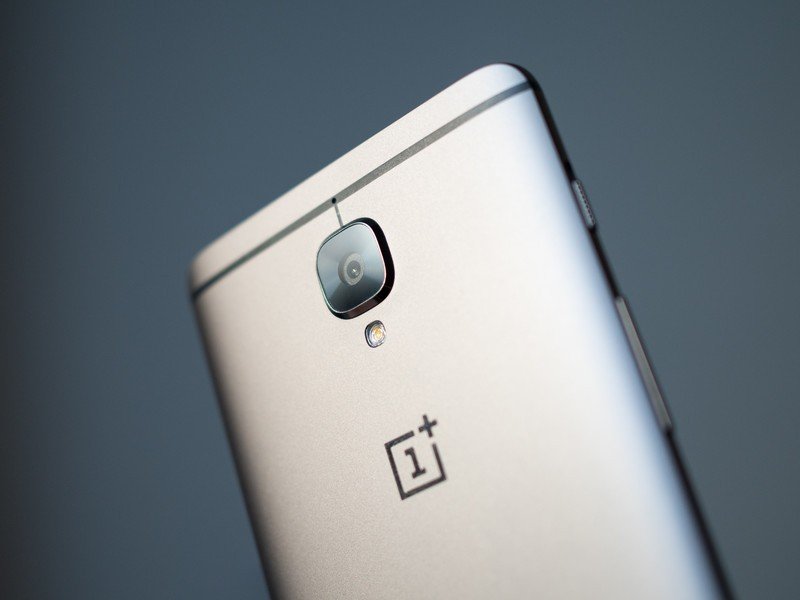

In fact, the only measurable difference between the two devices was the battery life. But by launching an updated variant of the OnePlus 3 after six months, OnePlus effectively had two flagships a year, and it continues to follow that release cycle to this day. Like the OnePlus 3, the 3T has aged very well, and it is still a usable phone.
OnePlus 3T review: Rekindling a love story
OnePlus 5: It's all about the refinement

Whereas the OnePlus 3 series was all about reinvention, the OnePlus 5 was more about refinement. OnePlus updated the design with an anodized aluminum chassis and the positioning of the antenna lines invoked comparisons with the iPhone 7. The phone was also slimmer and lighter than the 3T, but from the front, it was nearly indistinguishable.
The OnePlus 5 had exciting camera updates, and it came with 8GB of RAM.
The biggest change with the OnePlus 5 was the introduction of the dual cameras, with a 16MP primary lens joined by a 20MP telephoto module with 1.6x optical zoom. The phone debuted in June 2017 for $479 for the 6GB/64GB variant, and it was also the first OnePlus device to offer 8GB of RAM, with that particular option coming in at $539 and featuring a 128GB storage module.
The OnePlus 5 was powered by the 10nm Snapdragon 835 chipset, which offered a lot of efficiency gains over the Snapdragon 821. While the phone featured a new dual-camera system and upgraded internals, the fundamentals were unchanged from the previous year: it still had a 5.5-inch AMOLED panel with a fingerprint button below the screen, 16MP front camera, and 20W Dash Charge.
On the software side of things, the OnePlus 5 launched with OxygenOS 4.5 based on Android 7.1.1 Nougat, and it introduced a host of new features like Reading Mode, a new system-wide font, redesigned call UI, Do Not Disturb mode for gaming, and more. The phone picked up two platform updates and is currently on Android 9.0 Pie.

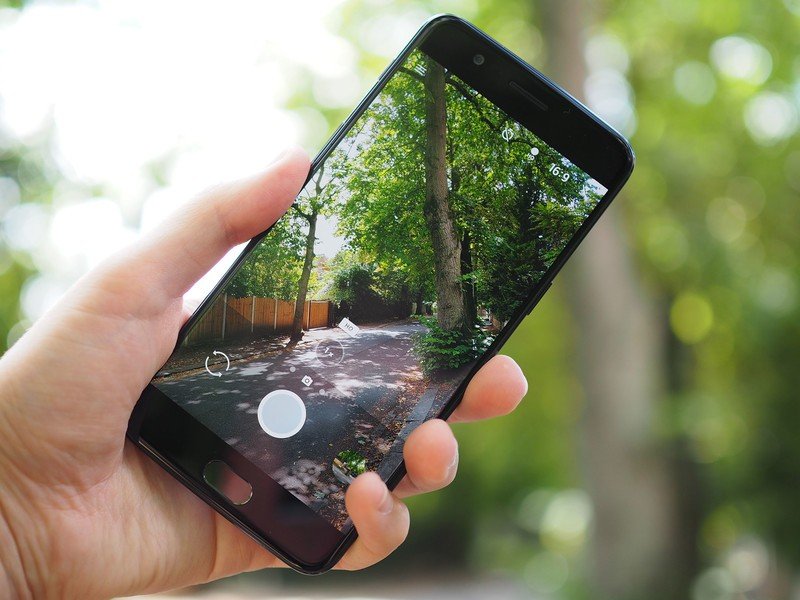



For better or worse, a lot of Android phones launched in 2017 shared a resemblance to the iPhone 7 series. While the design wasn't groundbreaking, the OnePlus 5 offered exciting new camera modules, and the updates to OxygenOS made it one of the fastest phones at the time.
The design is of particular interest to me because switching from the OnePlus 3T to the OnePlus 5 it is easy to see all the ways OnePlus improved usability. The rounded edges make it easier to hold the phone, and the pronounced curves where the back meets the mid-frame allows the device to nestle into your palm.
Because of the hardware on offer, the OnePlus 5 is fit enough to be a daily driver in 2020. Sure, the camera may not be on the same level as $500 phones available today, but from an internal hardware point of view, the phone still has plenty to offer.
OnePlus 5 review: Keep doing what you do best
OnePlus 5T: Bezels begone

The OnePlus 5T had just one point of differentiation from the OnePlus 5, but it was a pretty big one. OnePlus finally switched to an 18:9 form factor with the device, getting rid of the 5.5-inch 16:9 panel and instead slotting in a 6.01-inch 2160 x 1080 AMOLED display.
OnePlus finally switched away from the 16:9 form factor with the OnePlus 5T.
OnePlus moved the fingerprint sensor to the back of the phone to accommodate the taller screen, freeing up real estate at the front. As a result, the brand was able to offer a 6-inch screen that was a full 0.5 inches more than that on the OnePlus 5 while increasing the height by just 2mm.
The OnePlus 5T launched in November 2017 — just five months after the debut of the OnePlus 5 — and because it was so similar to its predecessor, retail availability of the OnePlus 5 was halted before the 5T went on sale. After all, the OnePlus 5T offered a more modern 18:9 panel and cost $499, just $20 more than the OnePlus 5.
OnePlus also switched away from the telephoto lens and instead offered a dedicated low-light module as the secondary lens on the OnePlus 5T.

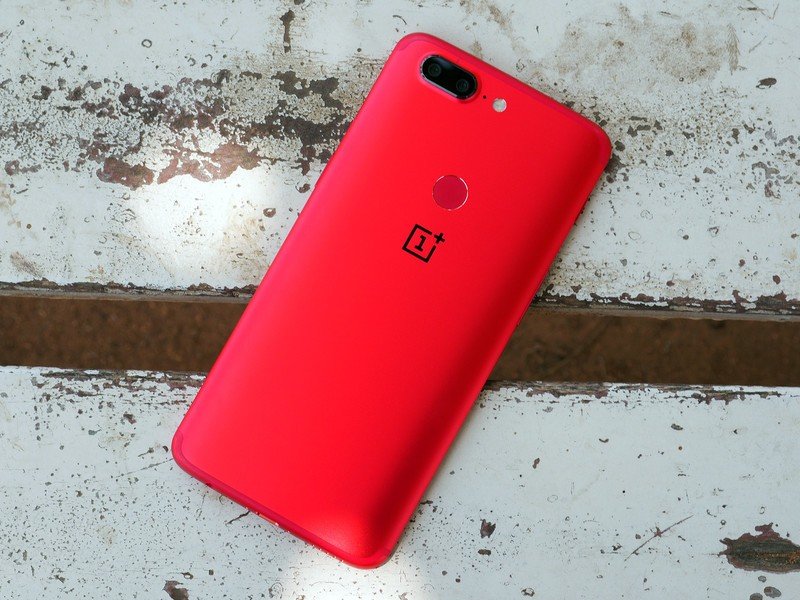


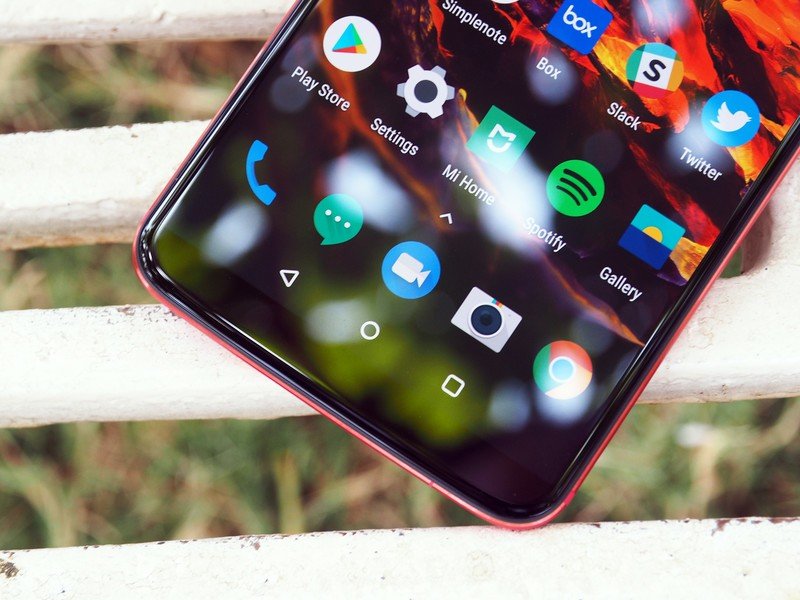
The OnePlus 5T has the distinction of being the first OnePlus phone to offer a face unlock feature. And although the phone launched in November 2017, it came with Android 7.1.2 Nougat out of the box and not Oreo. Thankfully, a stable Oreo build was rolled out to the device in early 2018, and the phone switched to Android 9.0 Pie in 2019.
The switch to an 18:9 display made the OnePlus 5T that much more exciting over its predecessor, and the fingerprint sensor at the back meant you could unlock your phone faster. I have relatives and friends that use the 5T to this day, and it is going strong in 2020.
OnePlus 5T review: Come for the value, not the excitement
OnePlus 5T Star Wars Edition: Out of this galaxy

If I had to pick a single OnePlus phone as my favorite, it would be the OnePlus 5T Star Wars Edition. OnePlus partnered with Disney ahead of the launch of Star Wars: The Last Jedi, and rolled out a phone that was incredible in every way.
This is my favorite OnePlus phone.
OnePlus nailed the design brief with the device: the Sandstone finish was an homage to the OnePlus One, but the white color option immediately made the phone stand out. The red accents for the Star Wars branding at the back and the Alert Slider served as a nice contrast to the white color scheme, and the exclusive themes and backgrounds made the overall experience that much more fun. The phone also came in custom packaging with a Kylo Ren-themed case.

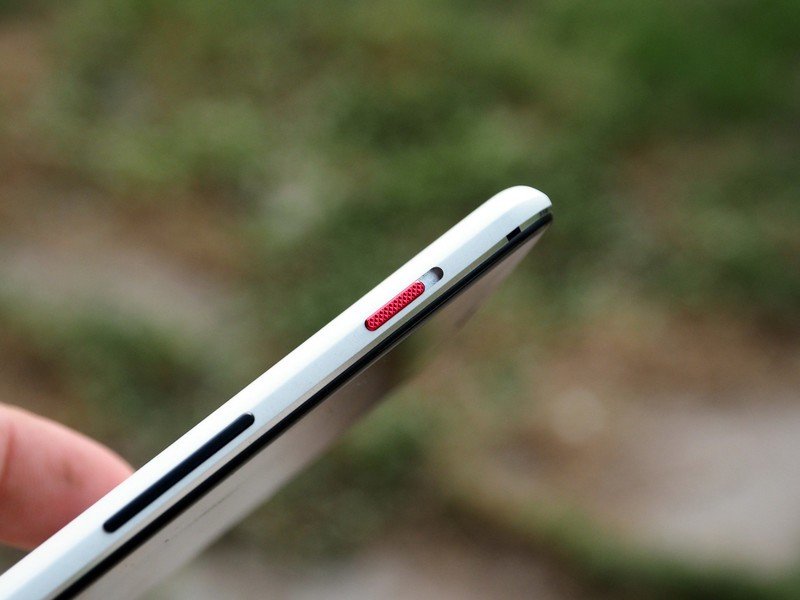




The downside? The OnePlus 5T Star Wars Edition was limited to India, where it debuted for the equivalent of $600, just $20 more than the 8GB version of the OnePlus 5T. OnePlus made limited units of the device, and it sold out pretty fast.
OnePlus 5T Star Wars Limited Edition review: The Force is strong with this one
OnePlus 6: Embrace the notch

The OnePlus 6 kicked off what I'd like to call the third generation of OnePlus design. The first wave was the formative years where we got the OnePlus One, OnePlus 2, and X, and the second generation included the metal designs: the OnePlus 3, 3T, 5, and 5T. With the OnePlus 6 series, the company switched to a metal and glass aesthetic that continues to this day.
The notch was divisive, but it allowed OnePlus to maximize screen real estate.
By the time the OnePlus 6 debuted in May 2018, OnePlus was firmly established as one of the main players in the affordable flagship segment. The phone launched at $529, $30 more than the 5T and $50 more than the OnePlus 5 — not bad when you consider all the changes.
The notable design feature on the OnePlus 6 was obviously the notch. The cutout was a way to free up screen real estate without making phones even taller, and that led to an ungainly notch that turned out to be very distracting. That said, OnePlus was able to fit a 6.28-inch 19:9 display in a chassis that was 0.4mm shorter than the 5T.
There were other design-focused changes. OnePlus switched to a vertical camera array at the back, and the glass design necessitated a thicker chassis, with the added bulk making it easier to hold the phone. OnePlus also rolled out its first Bullets Wireless earbuds alongside the phone, and that was a harbinger of things to come: the OnePlus 6 was the last phone from the manufacturer to offer a 3.5mm jack.


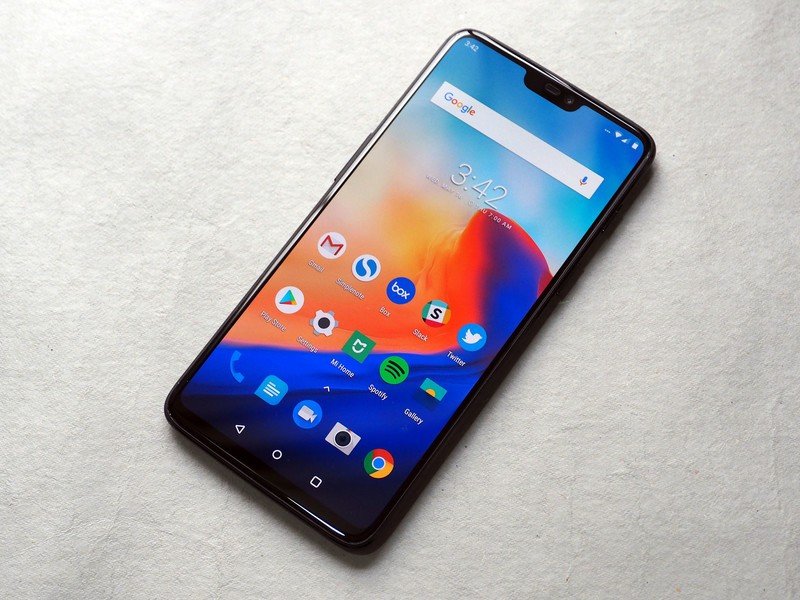



Other than the design, there were few hardware upgrades on the OnePlus 6: the Snapdragon 845 chipset was a minor bump over the Snapdragon 835 on the 5T, and the 16MP camera now had OIS. OnePlus also introduced splash resistance with the OnePlus 6, but it wasn't covered under warranty. On the software side, the OnePlus 6 debuted with OxygenOS 5.1.2 based on Android 8.1 Oreo, and received the Android 10 update earlier this year.
OnePlus came into its own on the design front, and the manufacturer started rolling out more vibrant color options with the OnePlus 6 series. Sure, we got a few standout phones before — like the Lava Red 5T — but OnePlus took things to a whole new level starting with the Silk White OnePlus 6.
The OnePlus 6 series solidified OnePlus' position in the Android world. The company did so well in markets like India that it was able to overtake Samsung in the premium category, a huge feat all things considered.
OnePlus 6 review: The matter is settled
OnePlus 6 Avengers Edition: Finding the right balance

OnePlus continued its partnership with Disney into 2018 with the OnePlus 6 Avengers Edition, with the phone launching as a tie-in for Avengers: Infinity War. The limited-edition variant of the phone was exclusive to India and China, and it retailed for the equivalent of $690.
The OnePlus 6 Avengers Edition was the perfect phone for fans of Marvel's Cinematic Universe.
Like the 5T Star Wars Edition, OnePlus paid a lot of attention to detail on the OnePlus 6 Avengers Edition. The phone came in custom packaging that was festooned with a large Avengers logo at the front, and the box contained a case styled after Iron Man's helmet. Each phone also featured a collectible in the form of a medallion, with six different medallions for the six original Avengers. The idea is that you combine all the medallions and it forms the Avengers logo. Seeing as how the phone was designed as a way of thanking OnePlus' user community, the collectibles were a nice idea.
The phone itself had the same glass finish with a glossy texture as the regular OnePlus 6, but there was a kevlar-patterned layer underneath the glass. There was also the Avengers logo at the bottom, gold accents around the Alert Slider, and a lot of exclusive themes and backgrounds on the software side of things.



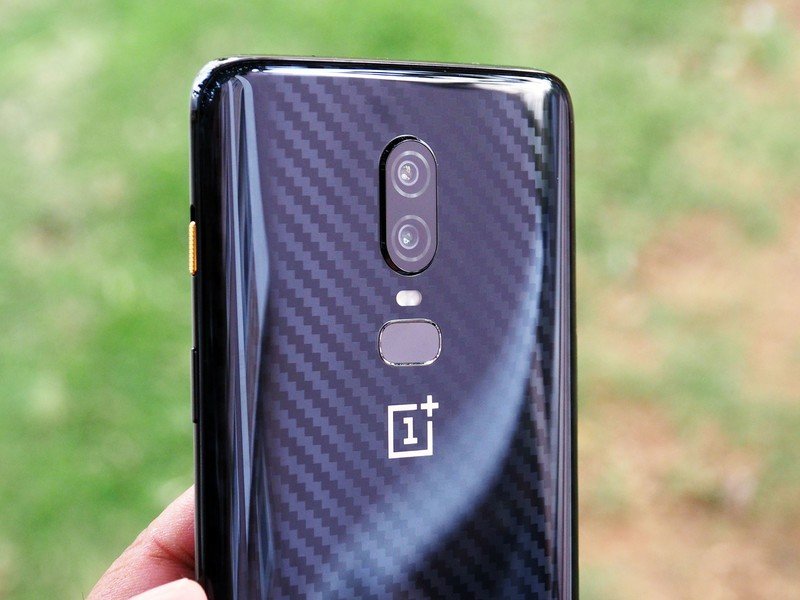
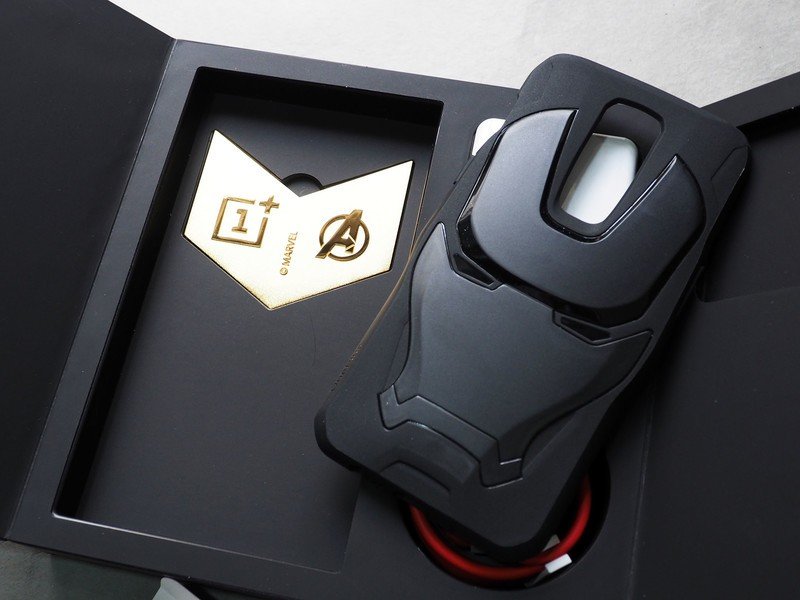

The internal hardware was identical to the standard OnePlus 6, but the Avengers model offered 256GB of storage out of the box. I wanted to see a kevlar back for the model as that would have lined up better with the Avengers theme, but it would have been harder to manufacture. The OnePlus 6 Avengers Edition was also very limited in availability,
This is the OnePlus 6 Marvel Avengers Edition
OnePlus 6T: Goodbye 3.5mm jack

By this point, OnePlus had its dual flagship release cycle down to an exact science. The company followed a tick-tock cycle that Intel pioneered with its chipsets: we got a generational update in May or June every year (tick), followed by another model six months later with various optimizations (tock).
OnePlus switched to a less intrusive cutout on the 6T, and ditched the 3.5mm jack.
The 6T followed a similar formula, retaining the same hardware as its predecessor while offering a thinner cutout, larger battery, and an in-display fingerprint sensor for the first time on a OnePlus phone. The overall design aesthetic was unchanged other than the notch at the front, which was much more palatable. That said, OnePlus fitted a larger 6.41-inch 19.5:9 (2340 x 1080) display in the 6T, and reduced the width by 0.6mm, leading to a taller and narrower phone.
OnePlus also got rid of the fingerprint sensor at the back, switching to an in-display solution. The first generation of in-screen sensors had their share of issues, and the module on the 6T was slow and unreliable. The company ditched the 3.5mm jack as well, justifying the move by putting a larger 3700mAh battery.
The OnePlus 6T debuted at $549, just $20 more than the OnePlus 6. Not only did you get a sleeker design with a less intrusive notch, but also more internal storage. With the OnePlus 6T, the company switched to 128GB of storage for the base model, double that of its predecessor.






Other than the increase in storage, the internal hardware was unchanged from the regular OnePlus 6: the 6T featured the Snapdragon 845, 16MP camera with 20MP secondary module, and 20W Dash Charge. OnePlus also rolled out interesting color options to differentiate the phone, and the Thunder Purple variant you see above continues to be one of my favorite designs.
Continuing the design theme, it's easy to see the similarities between the OnePlus 6T and earlier generations, including the 5/5T and even the 3/3T. While OnePlus switched to a glass back with the OnePlus 6 series, the design aesthetic itself hasn't changed too much, and the 6T has the same rounded edges and smooth flowing curves. OnePlus calls this the Horizon Line, with the unibody design curving in a way that resembles the curvature of the Earth.
OnePlus made inroads into the U.S. market with the 6T, with the device going on sale officially from T-Mobile. The carrier sold the 8GB/128GB option, which cost $579, but it was a big deal that OnePlus was able to get its device into T-Mobile's retail stores.
OnePlus 6T review: 90% of the phone for 60% of the price
OnePlus 6T McLaren Edition: Redefining speed

When it was time to introduce a limited edition variant of the 6T, OnePlus went with UK racing outfit McLaren. With 182 Formula 1 race wins spanning over fifty years, McLaren has a storied history in the annals of motorsport. The OnePlus 6T McLaren Edition debuted in December 2018 for $699, and unlike the collaboration with Disney, the McLaren variant was available in North America and other parts of the world.
The OnePlus 6T McLaren Edition came with a cool AR booklet and 30W fast charging.
Because the OnePlus 6T McLaren Edition retailed for $150 more than the regular 6T, OnePlus went out of its way to justify the exorbitant price tag. The device came in custom packaging once again, but this time there was a hardcover booklet detailing McLaren's racing heritage. While most companies would leave it at that, OnePlus added exciting AR effects that let users point their phone's camera at the booklet and unlock different photos and even videos.
The phone had a lot of unique features as well. The 6T McLaren Edition was decked out in a glass back with a glossy finish and a carbon fiber pattern underneath the glass layer, and an orange accent around the lower two-thirds of the sides. The phone also featured a lot of custom themes and animations.



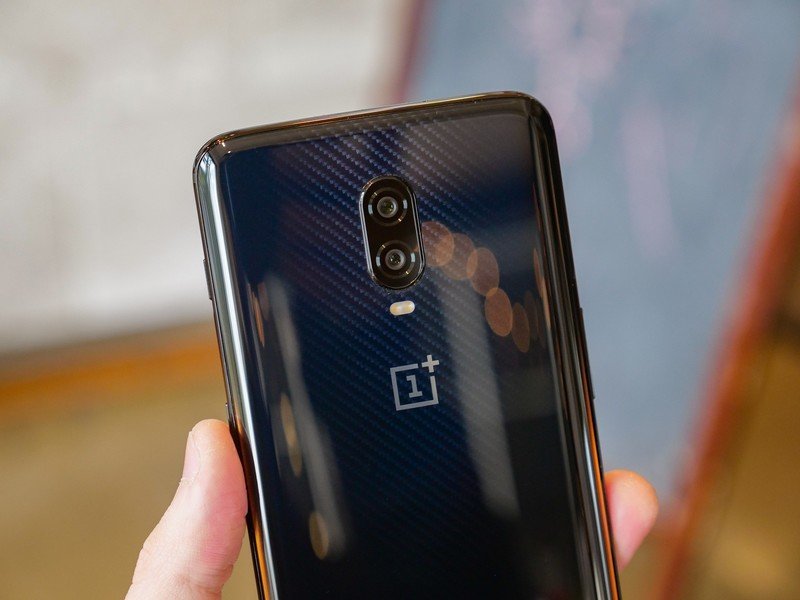

Things were different on the hardware front as well: the 6T McLaren had 10GB of RAM and 256GB of storage, and was the first OnePlus phone to offer 30W fast charging. The company's Warp Charge 30 standard made its debut on the device, and there was even a custom orange braided cable bundled in the box.
The box also contained a kevlar case with the McLaren logo, and an actual carbon fiber shard from McLaren's 2018 Formula 1 car, the MCL33. At the end of the day, the 6T McLaren was one of the best collaborations from OnePlus to date.
OnePlus 6T McLaren Edition hands-on: The fastest phone just got even faster
OnePlus 7 Pro: 90Hz goodness is here

2019 was a standout year for OnePlus. The company expanded its portfolio for the first time, introducing bold new designs aimed at the high-end category. The result was the OnePlus 7 Pro, a sleek flagship designed to take on Samsung, Huawei, and Google. The phone debuted in May 2019 for $669, a full $120 more than the 6T.
OnePlus aimed big with the OnePlus 7 Pro, and it delivered in a lot of areas.
Of course, the phone had more than enough new features to warrant the price hike. Dominating the list was the 6.67-inch 90Hz Fluid AMOLED panel with a QHD+ resolution, the best display OnePlus put on a phone to date. The 90Hz refresh rate made interactions that much more fluid, and there was a level of immediacy that just wasn't possible on 60Hz screens.
Another standout feature was the retractable front camera module, which allowed OnePlus to deliver an all-screen design devoid of any cutouts. The phone also had dual curved sides and stereo speakers, and the robust hardware combined with the 90Hz display made the OnePlus 7 Pro a fantastic device for gaming and streaming content.
The OnePlus 7 Pro also had top-tier hardware in the form of a Snapdragon 855 chipset, 6GB of RAM and 128GB of storage, 48MP primary camera with 8MP zoom lens and 16MP wide-angle lens, and a 4000mAh battery with 30W fast charging. Oh, and it also had a much better vibration motor, and the glass back had a frosted finish that looked particularly great on the Nebula Blue variant.

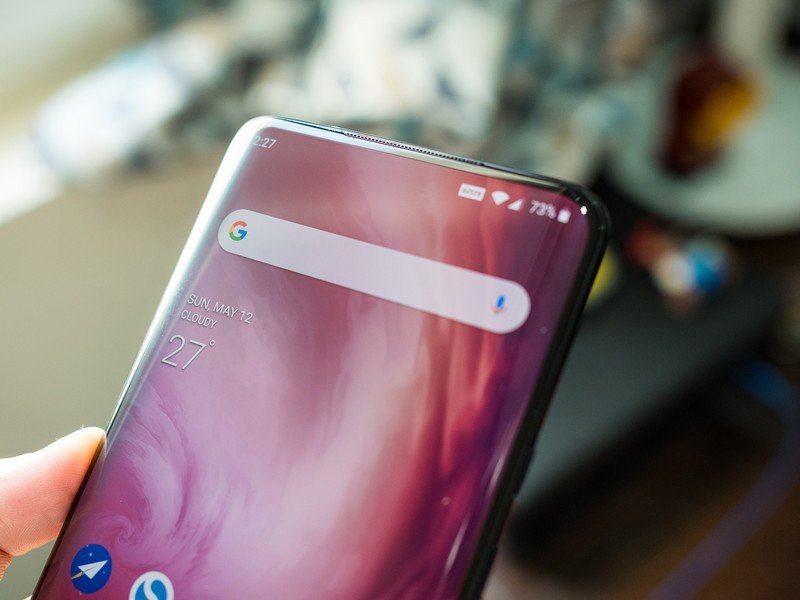

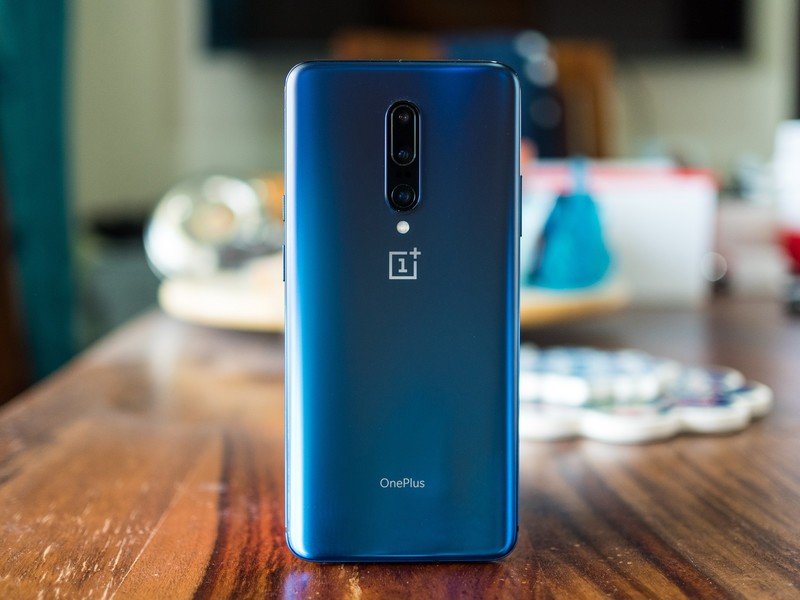


The OnePlus 7 Pro was obviously an ambitious bet for the company, but it showed that OnePlus could hold its own in the high-end category. The combination of a 90Hz panel, robust hardware, and clean software made the phone stand out in the flagship category. OxygenOS 9.5 introduced a laundry list of new features, including Zen Mode, a new gaming mode, native screen recorder, and more.
Sure, the OnePlus 7 Pro retailed for nearly $200 more than the OnePlus 5, but it also offered features that justified the increase. It may not have been a value-focused phone, but it still managed to undercut the likes of the Galaxy S10+ by $330. OnePlus also launched a 5G variant of the device in the UK, and other than a dedicated 5G modem, it had the same internal hardware as the regular version.
OnePlus 7 Pro review, 3 months later: Still my favorite Android phone
OnePlus 7: Maintaining the status quo
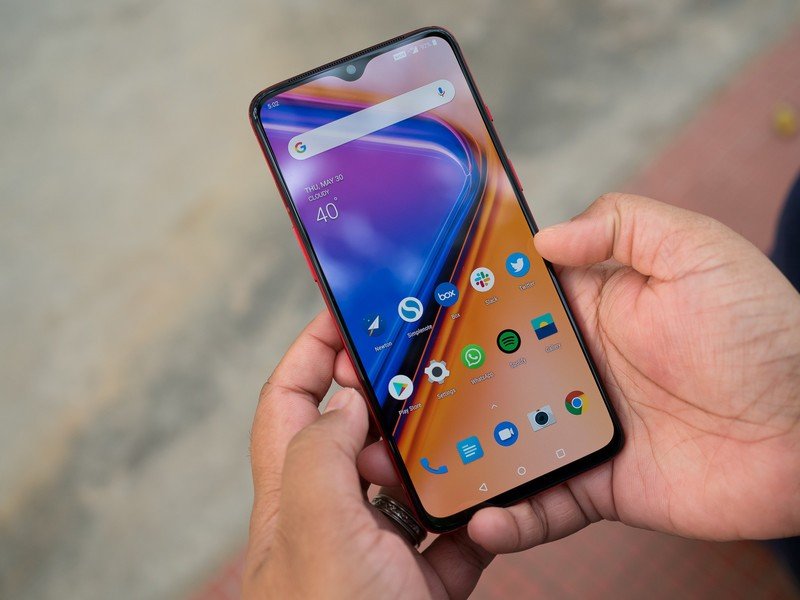
The OnePlus 7 can be best summed up as an updated variant of the OnePlus 6T, and as calling it the 6TT would have been awkward, it got the OnePlus 7 moniker instead. The phone was limited to select markets around the world, including India and the UK, and never made it to the U.S.
OnePlus updated the 6T with a new chipset and 48MP camera and called it the OnePlus 7.
The OnePlus 7 retained the same design as the 6T and most of the same internal hardware, but it picked up a few updates. It was powered by the Snapdragon 855 chipset, had the same 48MP primary camera as the OnePlus 7 Pro, and it even got a UFS 3.0 storage module and stereo sound. In all other areas, it was identical to the 6T: it had the same 6.41-inch screen, the same in-display sensor, 20W wired charging, and the same 3700mAh battery.
With the OnePlus 7 Pro focusing on the high-end category, OnePlus needed a value-based model to fill the void of the 6T in markets like India and the UK, and it introduced the OnePlus 7. It may not have been the most exciting phone, but it still offered decent value for under $500.






The updates on offer combined with the fact that the OnePlus 7 was running the same software as the OnePlus 7 Pro made the device that much more enticing.
OnePlus 7 review: Small improvements lead to a worthy upgrade
OnePlus 7T: The best Android phone under $600

With the OnePlus 7 aimed at selected markets and the 7 Pro retailing for just shy of $700, OnePlus needed an affordable flagship for under $600. The OnePlus 7T was the answer: the phone debuted in September 2019 for $599, $50 more than the 6T.
The OnePlus 7T delivered the best features from the 7 Pro at a more affordable price.
The OnePlus 7T had the same 90Hz refresh rate as the 7 Pro, but the 6.55-inch AMOLED screen wasn't curved, and the FHD+ resolution wasn't as big a drain on the battery. You still got the same great software, and the design at the back with the DSLR-like camera housing made the phone stand out. OnePlus didn't shortchange buyers on the hardware side of things: the 7T was one of the first phones to be powered by the Snapdragon 855+ chipset, it offered 8GB of RAM and 128GB of storage as standard, and stereo sound.
It also had the same 48MP and 16MP sensors from the 7 Pro, and came with a new 12MP zoom lens. OnePlus also updated its 30W Warp Charge standard to deliver better sustained charging speeds, and called it Warp Charge 30T.






The OnePlus 7T also had the distinction of being the first phone with Android 10 out of the box, beating out Google's Pixel 4 series. OxygenOS 10 introduced new features as well, including updated gesture navigation and tweaks to dark mode.
OnePlus 7T review: The best Android phone under $600
OnePlus 7T Pro: Similar in all but name

Even as T refreshes go, the 7T Pro was pretty tame. The phone had the same dimensions as the 7 Pro, and there was little new in the way of hardware. OnePlus didn't even launch the phone in the U.S., instead deciding to focus on markets like the UK, where the phone went on sale for £699 ($860).
The 7T Pro was nearly identical to the 7 Pro in most key areas.
The 7T Pro offered 8GB of RAM and 256GB of storage as standard, and featured the Snapdragon 855+. Other than that, and a minor bump in the battery to 4085mAh, it was the exact same device as the 7 Pro. It had the same 48MP + 8MP + 16MP cameras, same retractable camera module, same 6.67-inch 90Hz AMOLED screen, and the same 30W fast charging.
The device also had the same glass back with a frosted finish, but the Haze Blue color option was a shade lighter than the Nebula Blue on the 7 Pro.





The one positive for the OnePlus 7T Pro was the software: the phone came with Android 10 out of the box, ensuring platform updates all the way through Android 12. OnePlus didn't need to launch the 7T Pro, but with the company committed to its dual flagship release cadence, it had no choice.
OnePlus 7T Pro McLaren Edition: Turbocharged

OnePlus turned things all the way up to 11 with the 7T Pro McLaren Edition. The phone made its debut in November 2019 for £799 ($980), and it was limited to a few global markets, including the UK and India.
The 7T Pro McLaren Edition had a lot to offer, but it didn't come with as many goodies in the box.
Like the 6T McLaren Edition, OnePlus paid homage to the racing team's livery by adding an orange highlight across the lower two-thirds of the screen and an orange accent for the Alert Slider. Interestingly, the phone also had a pattern underneath the glass back that was styled after the carbon fiber composite material used in McLaren's road cars. As with every other limited edition OnePlus phone, the 7T Pro McLaren came with exclusive backgrounds and themes.
Best of all, the packaging included a case that had Alcantara fabric and a carbon fiber pattern around the sides. The internal hardware was unchanged from the standard 7T Pro, but the McLaren Edition offered 12GB of RAM and 256GB of storage as standard.





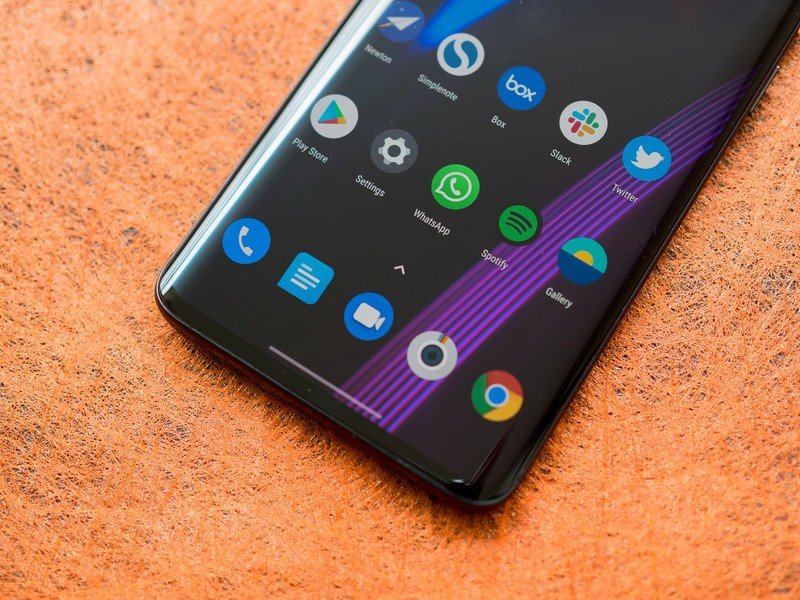
While the phone had a lot of cool new features, the packaging didn't contain some of the goodies from previous generations. There was no carbon fiber shard from a McLaren Formula 1 car, no AR booklet, and other than the Alcantara case, there really wasn't much in the way of bundled goodies.
OnePlus 7T Pro McLaren Edition preview: Great legacy, lazy execution
Get ready for the OnePlus 8

The OnePlus 8 series is set for an official unveil on April 14, and we'll likely see the OnePlus 8 Pro and the standard OnePlus 8. OnePlus already confirmed several key features coming to its 2020 flagships: the phones will come with 120Hz AMOLED displays, 5G connectivity, 30W wireless charging, and the Snapdragon 865 along with LPDDR5 RAM and UFS 3.0 storage modules.
The one point that was clear to me when going back through OnePlus' catalog was just how reliable most of these phones are in day-to-day use. Everything from the OnePlus 5 onwards is still good enough to be a daily driver, and that's incredible when you consider the pace of innovation in the industry.
Sure, OnePlus phones have had their share of issues, and the company hasn't delivered a camera that can take on Samsung and Google. But when we're talking about maximizing value, it's clear that no one does it better than OnePlus.
OnePlus 8: Everything you need to know

Harish Jonnalagadda is Android Central's Senior Editor overseeing mobile coverage. In his current role, he leads the site's coverage of Chinese phone brands, networking products, and AV gear. He has been testing phones for over a decade, and has extensive experience in mobile hardware and the global semiconductor industry. Contact him on Twitter at @chunkynerd.
